As a business owner, you may be wondering if you should adopt a marketing budget. After all, marketing can be expensive, and you may feel like you can save money by avoiding it altogether.
However, marketing is essential to making your business more competitive. By investing in marketing, you can reach new customers, increase brand awareness, and boost sales.
Why do I need a marketing budget?
A marketing budget guides your marketing activity.
In Lewis Carol's Alice in Wonderland, there is a passage where Alice is walking along a path, and she comes to an intersection with another path. She looks up and sees the Cheshire Cat sitting beside the path. Alice says to the cat, "Would you tell me, please, which way I ought to go from here?"
The Cheshire Cat replied, "That depends a good deal on where you want to get to." Alice replies, "I don't much care where." The Cheshire Cat says, "Then it doesn't much matter which way you go."

Much like Alice, if you don't know where you want to go with your business, there isn't much point in trying to create a budget or a plan.
On the other hand, if you have thought through your desire for the future of your business, then budgets, plans, and goals are essential to ensure you get there.
The optimal marketing strategy will have marketing spending that can comprise between 10% and 25% of a company's revenue. Given the magnitude of this expense category, it is essential that you have a well-considered plan to guide your budget.
The budget allocates your valuable capital deliberately.
The lifeblood of any company is its cash flow. Failure to carefully allocate this scarce resource can result in a sub-optimal return on capital and the destruction of value for the business.
For a business to provide value to its shareholders, it must generate a return above the average cost of capital for the enterprise. For small companies, the cost of capital can be quite high because much of the capital comes from equity and early-stage debt -- both of which have a very high cost due to the associated risk premiums for these sources of capital.
It creates a foundation to measure growth and success.
Your small business marketing budget sets the foundation for calculations for return on investment for marketing and advertising expenses. If you have a loose or poorly planned marketing budget, it will be difficult to calculate ROI accurately and consistently.
Often businesses have a very disciplined approach to managing manufacturing input costs, distribution costs, wages, and other operating expenses. The marketing budget should receive the same level of discipline and planning as is used for these other expense categories.
Marketing, and especially digital marketing, can be measured very accurately. Using readily available marketing technology, a small business can easily gain insight into the performance, attribution, and effectiveness of the advertising budget.
How do I create a marketing budget?
Establish your marketing goals.

It's important to determine your marketing goals first. Then, you can create a strategy that includes budget allocations to achieve those goals.
This will allow you to determine the budget that you need to reach your goals.
To properly allocate your marketing budget, the first step is to establish revenue goals and plan how you will achieve them. No matter what industry you are in, your goal as a marketing team should be to achieve or exceed a revenue goal.
Your goals for your target market should drive every decision you make, even with a limited marketing budget.
For example, if you are planning a marketing budget for a brick-and-mortar store, your goal should be to achieve a certain number of sales each year, but you likely have salespeople working in a luxury brick-and-mortar shoe store that will allow you to spend less on marketing and advertising.
However, an e-commerce store selling shoes will spend its marketing budget differently than a brick-and-mortar shop. While they still have to sell shoes to meet their revenue goal, they might choose to spend more on digital marketing because they don't have a sales team to drive new sales.
Understand your target audience.
A buyer persona can be described as a fictional representation of your target audience. Although you can have multiple of these target customers, or buyer personas, try to limit them to five or less. Not everyone can be your target market. Be specific when creating your buyer personas. Let data guide you.
These are just a few ways you can gather data that will help you build your buyer personas.
- Take a survey of your customers.
- Interview people who you believe might be part of your target audience.
- Google Analytics can be used to identify audience demographics.
- Facebook Insights allows you to track the interaction of your users with your brand.
Include this information in every buyer persona:
- Geography - where will you find them?
- Demographics - gender, age, ethnicity, education, marital status, etc.
- Psychographics - hopes, fears, motivations, expectations, etc.
- Job - the company's size, level of seniority, title, etc.
- Financial data - income, net worth, wealth score, the value of the home, etc.
- Habits - where do they shop, what do they read, who do they trust, etc.
Evaluate the market and the competition.

When creating your budget and marketing strategy, it's important to conduct research on your competition and the market. This will help you determine how much to spend on marketing and what strategies to use.
If possible, you should conduct primary and secondary market research to create your marketing plan. Use both qualitative research like focus groups and quantitative research where a statistically significant number of surveys are captured and analyzed.
Competitive intelligence gathering and analysis will give you a broader understanding of what others are doing, what is working, and what is not working.
Competition research can be conducted online, through trade publications, or by attending industry events. You want to understand what your competition is doing to stay ahead of them.
How you plan your marketing spend will be influenced by current economic trends like consumer confidence, purchasing power, rate of inflation, and other similar measures. Other trends like fashion trends, new technology developments, social patterns, and trends in entertainment are also important.
Identify, select, and test marketing channels.
Marketers have more options than ever to reach consumers. It's easy for marketers to become overwhelmed by the numerous options available.
It is important to ensure that your marketing spend and time is spent on the most effective channels and strategies. It's easy for fear to stop you from getting started if you don't know what works best.
There's good news: choosing marketing channels for your marketing plan does not have to be difficult.
There is a lot of talk about chatbots and AI these days. These types of tactics may not be desirable or possible unless you are a highly skilled marketer or have a lot of resources.
It's okay not to need the most innovative thing to succeed. Don't fall into the trap of chasing every shiny object you come across -- sticking to tried and true strategies and tactics is always a good plan.
What is a marketing channel?
Marketing channels can be any platform or method that is used for marketing a product to consumers.
The main goal of a marketing channel is to transfer ownership of the product or service from production to consumption. This could be done through:
- Social media channels: Instagram and Facebook, LinkedIn, Twitter, etc.
- Print marketing: Mazine ads, newspaper ads, brochures, etc.
- Email marketing: Email signatures, marketing emails, newsletters, etc.
- Websites - Your website and any associated landing pages.
- Influencers - People with large and engaged social media audiences.
- Referral channels - Directory websites, websites that refer to your page, etc.
- Sales funnel - A process, tools, systems, and automation to convert leads.
- Search Engine Optimization (SEO): Both on-page and off-page SEO strategies.
- Word of mouth - Spreading the word about your company and what you offer.
- Search marketing (PPC), Google Ads, Bing Ads, social media ads, etc.

Measure, adjust, and repeat.
Marketing is a constantly evolving field and measuring, testing, and adjusting marketing strategies is an essential component of building and maintaining a successful marketing campaign.
One key factor to consider when measuring marketing spend is your marketing budget - how much are you spending on marketing activities, and what results do you see in terms of return on investment? The money spent is the first important metric.
Another important aspect to consider when evaluating marketing strategies is the use of A/B testing - running controlled experiments that compare two different versions of the same marketing material or campaign to determine which one performs better.
This can help you identify which channels deliver the best results for your business, as well as optimize your messaging to better connect with your target audience.
Overall, effective marketing requires constant evaluation and adjustment to be successful. By regularly measuring your marketing budget and ROI and using A/B testing, you can ensure that your marketing strategies are on track and delivering the best possible results for your business.
How much should I budget for marketing?
What is the average marketing budget as a percentage of revenue?
According to the U.S. Small Business Administration, a common recommendation for profitable businesses with less than $5,000,000 in annual sales is to spend about 8% of revenue on marketing. This assumes the business has net profit margins of 10-12%.
While this is a good rule of thumb, the exact amount that small businesses spend on marketing and advertising can vary widely depending on the industry, company age, cash available, and many other factors. A small business marketing budget is dependent on many factors, so these rules of thumb are exactly that.
Despite the uncertainty surrounding the economy and general optimism being dampened by inflation and COVID variants, recent reports from marketers indicate that marketing budgets have been on the rise.
The average percentage of total budgets allocated to a marketing plan has increased to 11.8%. This is a return to pre-pandemic levels.
In addition, the annual marketing budget broke the 10% mark for the first time in the last decade. This number is expected to rise even further in the next year.
The next year will see an increase in marketing spending across all categories, including brand building (+11.8%), customer relations management (+9.5%) and new product introductions (+8.8%), as well as customer experience spending (+8.6%), service introductions (+5.3%) and traditional advertising spending (+2.9%).
Do industry segments allocate marketing budgets differently?
A recent survey revealed that B2B companies (product-focused) allocate 9.4% of company revenue to their overall marketing money to marketing efforts, while B2B companies (services-focused) assign 11.4%.
For consumer-facing industries with products, 15.9% of the overall budget is given to marketing departments. For service-focused B2C companies, this number is closer to 12%.
When determining the percentage of your marketing budget, it is important to consider whether you are a B2B or a direct-to-consumer business. The industry is also a significant factor.

Marketing spending by industry is also widely different.
Budgets, for example, are the highest in Education at 19.4% of the total budget. They're also the lowest in Energy at 4%.
You might expect a marketing budget of around 7% if you work in healthcare.
Consulting services usually attribute 13%. Finally, software platforms and technology often attribute 12% of revenue to marketing budgets.
What should I spend my marketing budget on?
What are the accounting categories to consider in my marketing budget?

Your budget should include all investments that are allocated to marketing resources, campaign expenses, social media, online advertising, and tools, as well as creative project fees.
Your digital marketing expenses for paid media like traditional marketing and other offline marketing allocations will share a portion of the budget. Depending on the type of business and your marketing strategies, one might be more than the other.
Large corporations might rely heavily on both digital and traditional marketing strategies, but businesses that are purely online tend to allocate more marketing money to digital campaigns.
These are the top items you should include in your marketing budget:
Lead generation
The size and scope of the business determine how much money is allocated for lead generation. Smaller or less established businesses may have marketing priorities that require them to spend a lot of marketing budget on lead generation to grow the customer base and retain existing customers. Larger, more established companies may spend more on nurturing existing leads or have a marketing budget based on the need for purchasing better-quality leads through affiliates.
Digital marketing campaigns
In small business marketing teams, social media, email marketing campaigns, and SEO efforts are important parts of the digital marketing program. Digital marketing covers a broad range of resources and practices dedicated to improving a company's online presence. Companies must invest in digital marketing to reach customers online.
Digital marketing can also include content marketing, referred to as inbound marketing. This channel may require large sums of money. Online SEO often pairs with content that matches search trends and keywords. Digital marketing funds can be used to pay freelancers or intern content creators to create blogs, edit videos, and record audio tracks.
Creative design
For marketing campaigns both online and offline, visual design is essential. It is important to include funds for freelance and in-house design when constructing and managing your small business marketing budget. Creative design budgets can be more volatile than in other areas due to changing demands for new designs in inbound marketing, advertising campaigns, revised product packages, or company logo updates.
Advertising
Advertising expenses include digital ads, print ads, and radio advertising. Businesses often divide their advertising budgets among traditional media like radio and print, which may require different payment structures than digital ad campaigns such as PPC marketing. Advertisement budget expenses are often used to target particular audiences.
A Facebook ad isn't the only way to drive social media results. Social media posts can be boosted to increase their visibility, often at rates well below equivalent advertising costs.
Software tools/data insight
Marketing decisions and efforts are driven by data analysis. Marketing automation software tools are essential to gaining insight into customer marketing information. This is why a key part of marketing budgets also includes software tools.
For marketing professionals to make informed decisions and plan, detailed reports are essential. These reports can be used for lead databases, customer relationship management, campaign statistics, and other marketing insights. This portion of the marketing budget includes fees for accessing software systems or purchasing them.
Website
A company website is not only a complement to marketing programs but also serves as a platform for businesses. Small business owners know that website operations and website optimization account for a large portion of the budget allotment. Website traffic and e-commerce are so important in a company's marketing efforts that they are often budgeted separately through their marketing department. How many site visits are necessary to generate a lead, and eventually, a sale, is an important metric.
Events and public relations
Live events are also part of marketing budgets. These events connect brands with an audience. Part of a marketing budget can include sponsorships and trade shows. This may include expenses companies incur to receive recognition from professional associations or the media. Small businesses can often get an outsized return on events for local marketing objectives.
Marketing personnel
Marketing budgets can include salaries for members of the marketing team, depending on the company. This could include costs for onboarding new members or career development through continuing education training. Marketing budgets that include employee payroll might also include travel, reimbursement, and bonus expenses.
Make decisions based on data.
These are some recent trends in marketing budgets across various industries:
- The digital marketing budget has been increasing steadily for many years, and there is no sign of it slowing. Researchers predict marketers will spend up to 42 percent more on each digital channel in the next few years.
- Google predicts that search marketing will account for most online marketing budgets. Over seventy percent of small businesses stated that they expected to increase their Google Ads spending. As more companies use interactive banner ads and online videos, display advertising will be the second most popular online marketing channel.
- Video marketing will no longer be viewed as an afterthought in content. In the coming years, it will be significantly more important. Forrester Research discovered that video included in emails results in a 200 percent to 300% increase in click-throughs.
- While search marketing and videos continue to dominate marketing spending, social media marketing channel spending has slowed down (except for Facebook). A mere half of the respondents to a recent survey intend to increase their spending on social media advertising on platforms like Instagram, Twitter, or Snapchat.
- Content marketing remains a crucial part of any successful marketing strategy, and it still consumes a significant amount of marketing spend. B2B marketers invest, on average, 28 percent of digital advertising budgets in content marketing.
How do I calculate the return on investment (ROI) of my marketing spend?

You should evaluate the effectiveness of the marketing strategy you used over the past year when planning your marketing budget. To do this, you will need to answer three questions to understand how to create an effective budget.
- What marketing campaigns were the top generator of leads?
- How many leads and how many site visits were generated from these campaigns?
- What marketing channels supported the sales funnel best?
- What digital channels did not help you reach your revenue goals?
- Are there any marketing technologies that can be cut?
These are the questions you should ask yourself as you examine your budget. It's useful to look at the budget for the previous year from a high-level perspective, but it is also important to consider how many leads and sales each campaign generates relative to its cost.
ROI calculation formulas
There are many ways to calculate the marketing ROI. However, the basic formula that is used to determine marketing impact at a high level is fairly simple.
(Sales Growth - Marketing Cost) / Marketing Cost = Marketing ROI
This formula assumes that all sales growth can be tied to marketing efforts. Marketers should consider organic sales to get a better understanding of the marketing impact and ROI.
(Sales Growth - Organic Sales Growth - Marketing Cost) / Marketing Cost = Marketing ROI
What is a good marketing ROI?
A 5 to 1 ratio is the most common rule for a small business marketing ROI. It is considered exceptional to have an ROI at around a 10-to-1 ratio. A ratio below 2 is not considered profitable as it has been shown that organizations can break even on their costs of producing and distributing goods/services.
But overhead costs and overhead less than 50% of the sales price can result in higher profits. Every organization is unique, so it's important that you consider overhead costs, margins, and industry factors specific to your sector when you decide how to allocate marketing dollars.
You can use marketing budget templates to help calculate ROI and manage expenses. These marketing budget templates are a very useful tool.
ROIs help make better decisions.
Let's suppose you have advertisements running on a podcast or on a radio show. The podcast generated 1,200 leads, while the radio program generated 2,000 leads.
It seems like it would make sense to spend more money on radio advertising. You will see that the podcast placements cost $8,000 and the radio placements $15,000, respectively. Each lead from the podcast costs $6.60, and each radio ad leads you at $7.50.
You'll probably choose to spend more on podcast advertising if you know the cost efficiency of each channel. This is exactly the kind of thoughtful approach that you need as you balance your next round.
Build a successful business by creating and managing an effective marketing budget.
Asymmetric, led by former Army Delta Force operator and corporate executive Mark Hope, can help you implement these ideas in your business. You can contact Mark by email at mark.hope@asymmetric.pro, or by telephone at +1 608-410-4450, or you can schedule a complimentary strategy discussion by clicking here. You can follow all of his articles on Medium.


Mark Hope
Mark A. Hope is the founder and CEO of Asymmetric Marketing – a unique agency specializing in building high-performing sales and marketing systems, campaigns, processes, and strategies for small businesses. Asymmetric has extensive experience with organizations across many industry segments. If you would like some help in implementing ideas like these in this article, feel free to give Mark a call at 844-494-6903 or by email at mark.hope@asymmetric.pro.

